Equipment
The keyboards I use in the different bands
The keyboard setup I use with The Rock Legends


Nord Electro 3 61 and Roland SC-33 module
The keyboard set up I use with Ultimate Whitesnake


2x Korg X5D's
The keyboard setup I use with Songs of Smokie


Nord Electro 3 61 with Roland SC-33 module
The keyboard setup I usewith Classic Clapton

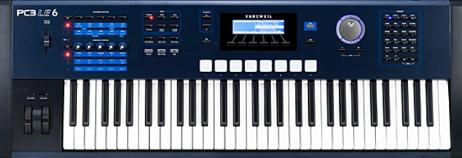
Kurzweil PC3 LE6 and Hammond SK1
The keyboard setup I use with The Blue Flamingos


Kurzweil PC161 and Hammond SK1
The keyboard setup I use with Animal Tracks

Hammond SK1
My new iPad IOS setup I now use for International Touring
Sometimes there is no need for me to take any of my keyboards away with me when touring abroad. I can now just connect my iPad Mini to ANY supplied keyboard via a standard midi connection. The apps I have installed onto the iPad are:
Hammond B-3X (Gives me all the Hammond sounds I need)
NEO Soul Keys (Gives me loads of Electric Pianos)
Galileo (Gives me the VOX Continental sound I need)
Ravenscroft 275 Piano (Excellent acoustic piano sound)
iSymphonic Orchestra (For big Orchestral sounds)
Bismark bs-16i (General Midi sound collection)
^
iPad connects to any Midi keyboard
Audio output connects straight to PA
And if keyboards are not required in certain songs then you might just catch me playing my Aria electro-acoustic mandolin instead !
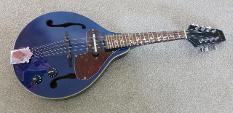
Why I like these keyboards
The Nord Electro 3 61 note
I was first introduced to Nord products when I was asked by Nord's previous distributor if I would like to help promote their keyboards in the North East of England. I jumped at the chance and they sent me an Electro 3, a Stage Compact and a C1 organ to evaluate. I thought they were great. In particular I liked the fast action and compact size of the Electro 3 and found it to be the most appealing out of the three of them for live work. I have tried the Electro 4 and 5 but I felt that their sounds and the Leslie simulation were over-processed and still prefer the sound of the Electro 3 because of it's very raw sound which really cuts through when playing in a live band.
The Kurzweil PC3-LE6
The pianos! It's pianos are awesome. The PC3 might be a bulky and heavy keyboard but it's built like a tank and it is packed with hundreds of quality sounds from luscious pianos and orchestra patches to quirky electric piano sounds. It contains a massive catalogue of sounds that can be modified and programmed any way you want and is ideal for songs that need multiple layers of sounds and splits across the keyboard.
The Kurzweil PC1-61
This is the PC3's little brother. Although it is physically smaller and lighter than the PC3 it still has exactly the same sound engine and patches as the PC3. The only thing lacking is the ease of programming and it does not have as many layers or splits. I like it because it's keyboard action is much faster and lighter than the PC3 and with it being about half the weight it's much easier to transport. This PC1-61 is a European import because they were never fully released in the UK. This was due to there being no UK distributor at the time they were released and now they have become a legacy product.
The Hammond SK-1
An absolute gem of a little keyboard. It has fantastic Hammond sounds, as you would expect. Although the Nord also has a great Hammond sound, especially for live work, the SK-1 does sound more authentic and it is perfect for theatre or studio work where you really need to recreate that true Hammond sound. It's also great to use as a single all-round keyboard with the Animal Tracks band as it also has some very authentic Vox Continental organ sounds, as well as great electric and acoustic piano sounds.
The Roland Sound Canvas SC-33 module.
I have always used these excellent little modules since they were introduced in 1992. I think I must own about eight of them. These little modules contains the standard Roland sound set that was used in many Roland keyboards of the 80's and 90's. They were also released as the Boss Dr Synth which is identical. Although the sounds are pretty dated by today's standard this module is very handy to temporarily blend in an extra piano, synth, wind or string instrument on the fly whenever needed.
The Korg X5D.
A great little keyboard that has Ai Synthesis and very comprehensive editing features. With a little bit of extra programming it can recreate some of the great synth sounds of the 80's and 90's and also a pretty mean Hammond organ sound, ideal for use in the Whitsnake tribute band.
Other keyboards I own
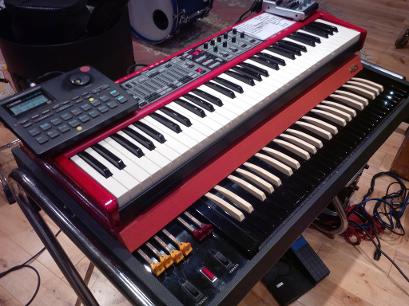
My 1964 Vox Continental
It is a British made V301J model built by Jennings in 1964. These are the ones to have. It's the same model that Alan Price used in The Animals to record House of the Rising Sun. This particular organ was bought from Tappy Wright in the 1970's who was the road manager for The Animals during the 1960's and it would have been played by Dave Rowberry. It has wooden keys and was manufactured in the UK prior to them being made in Italy where they would use plastic keys and different generators.
Although it's old it still works well, and I regularly use it in my Animals shows and videos.
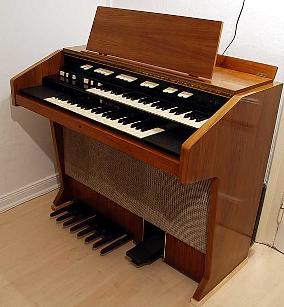
My 1960's Hammond L100
It's a bit of a white elephant now because of my SK-1 and the Nord Electro but it still sounds nice especially through my Neo Vent. Why have I still got it? Well it's because it is the same model that Keith Emerson used for Pictures at an Exhibition and the one he used to stick daggers into on stage. Is that not a good enough reason to still hold on to it?
Past keyboards I have owned and why I liked them or disliked them
The Korg X5D

Korg X5D
What a great little keyboard the Korg X5D was when it came out in the 90's. I still own about five of them. One is still in Poland waiting for me to go back there to pick it up. They were virtually unbreakable, they had a very comprehensive sound set and were so compact and lightweight you could just stuff them into the overhead locker on a plane. Unfortunately most of the sounds are not now up to today's standard but it has a great Ai Square Synthesis System to create all those great 80/90's synth sounds.
The Korg Kronos 61
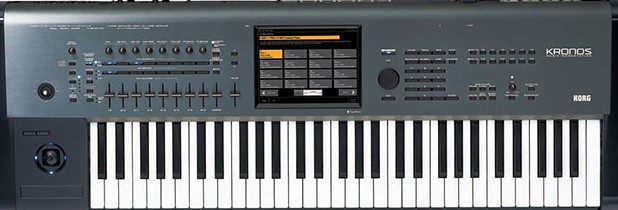
Korg Kronos
When I read all the hype about the Korg Kronos I just had to have one. It looked like it was the dream keyboard I had been after all these years. No need for separate organs or pianos because all the quality sounds I needed were now there in one keyboard. When I got it home it sounded good, in fact too good to be true. I set up patches for different songs and took it to its first gig with a big smile on my face. I soon got that smile wiped of my face when the band fired up. Where did all those great sounds go? Luckily I also had the Nord set up next to it and quickly switched keyboards. I realised that the Korg's sounds were great to listen to in a quiet environment, but in a loud live band situation you could only hear a very thin skeleton of the sound. Perhaps the sounds were too over processed for my liking and the body of the sound that I wanted to hear was lost in the volume. Needless to say it was quickly moved on.
The Korg Kross 2 61

and the Korg X50

Korg Kross and Korg X50
What an absolute pile of rubbish and an insult to keyboard players these two keyboards are. I'm not knocking the sounds that are in them or what you can do with them but these keyboards are unplayable. Why on earth do Korg go to all the bother of designing a good keyboard and then ruin it by putting a cheap plastic toy keybed in it? Keyboard players will know that a good playable action on a keyboard is very important. The keys on these instruments work by bending the actual plastic downwards with the hinge point right on the top edge of the key, so the pressure needed to push a key down anywhere near the top is virtually impossible. Both of these keyboards went straight back to the supplier.